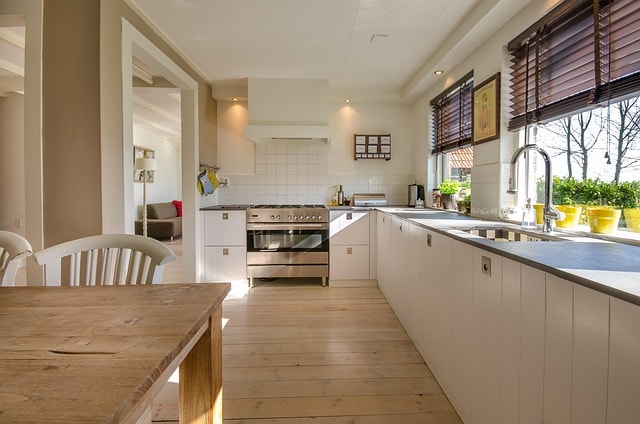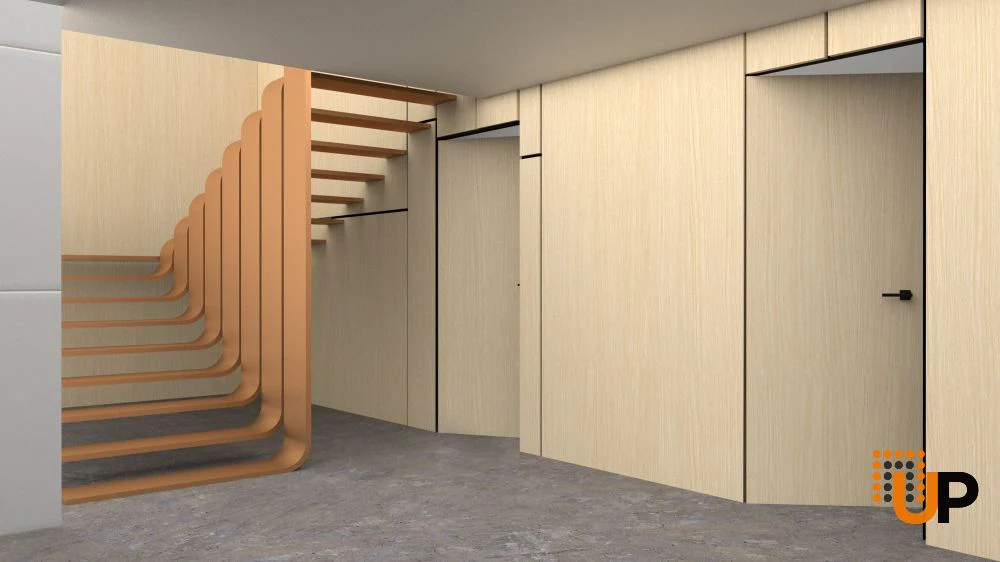My shopping cart
Your cart is currently empty.
Continue Shopping
Choosing the right wood for your doors can dramatically impact both your home’s aesthetic appeal and long-term functionality. Whether you’re installing a stunning front door to enhance curb appeal or selecting interior doors to complement your home’s decor, the type of wood you choose affects everything from durability and maintenance requirements to overall project costs.
Understanding the types of wood that are best for doors requires balancing multiple factors: strength, weather resistance, grain patterns, and budget considerations. With dozens of wood species available, from traditional oak to exotic walnut, making an informed decision can feel overwhelming.
This comprehensive guide breaks down the best wood species for door construction, examining both hardwood and softwood options. You’ll discover which woods excel in specific applications, how different species handle various climates, and what maintenance requirements you can expect over time.

Wood doors have long been a favorite for homeowners seeking both style and substance in their living spaces. Whether you’re considering solid wood doors for a grand entryway or a custom wood door to add rustic charm to your interior, the natural beauty of wood is hard to match. With a wide variety of wood species and types of wood available, there’s a wood door to suit every taste and architectural style. From classic paneled designs to sleek, modern finishes, wood doors offer unmatched versatility, allowing you to create a warm and inviting atmosphere in any room. Their ability to be customized with different stains, finishes, and hardware means you can achieve the exact look you desire, making wood doors a timeless choice for both new builds and renovations.
The unique characteristics of wood make it an ideal material for crafting beautiful and durable doors. Each wood species brings its own personality to a wood door, from the bold, open wood grain of oak wood to the subtle, fine grain pattern of maple. The type of wood you choose influences not only the door’s appearance but also its strength and longevity. Popular wood species like cherry, walnut, and pine each offer distinct textures, colors, and grain patterns, allowing you to match your door to your home’s decor and your personal style. Whether you prefer the pronounced grain of a traditional oak door or the smooth, understated look of maple, understanding these differences helps you select a wood door that will stand the test of time and enhance your living space.

The foundation of any quality wooden door starts with selecting the right wood species. Hardwoods like oak, mahogany, and cherry offer superior durability and strength for door construction, making them ideal choices for both interior and exterior doors. These dense woods resist warping, cracking, and everyday wear better than their softwood counterparts. Certain woods, such as oak, pine, and mahogany, are specifically chosen for their unique properties, including durability, ease of maintenance, and suitability for both structural and aesthetic purposes in doors and windows.
Softwoods such as pine and cedar provide excellent value while maintaining good performance, particularly for interior applications or moderate climate conditions. When properly kiln-dried and treated, these woods deliver reliable service at a fraction of hardwood costs.
Engineered wood options combine multiple wood layers for enhanced stability and resistance to warping. These manufactured products bond wood fibers in cross-grain patterns, virtually eliminating the natural movement that causes traditional solid wood doors to stick or gap with seasonal changes. In contrast, a solid wood door is crafted from a single piece or multiple pieces of the same wood species, offering unmatched durability, craftsmanship, and a premium feel that many homeowners prefer for its longevity and aesthetic appeal.
Wood density and grain structure directly impact door longevity and weather resistance. Denser woods like hickory and oak provide greater resistance to impacts, scratches, and daily use. Meanwhile, the grain structure affects both appearance and performance - tight, uniform grains create smooth finishes ideal for painted doors, while pronounced grain patterns add character to stained applications. Certain woods are selected specifically for their density and grain, ensuring the right balance of durability and maintenance for doors and windows.
Premium wood species like walnut wood and hickory deliver exceptional aesthetics and long-term performance. These investments often cost two to three times more than standard options but provide decades of reliable service with proper maintenance.

Oak remains the most popular choice due to its exceptional strength and classic grain patterns. Both red oak and white oak offer outstanding durability, with red oak featuring reddish brown color undertones that accept stains beautifully. White oak provides slightly better moisture resistance, making it preferred for exterior door applications. Oak woods, known for their open grain and traditional look, are highly popular for interior applications such as doors and furniture due to their rustic appeal and versatility.
Red oak doors showcase medium wood grain patterns with excellent workability for custom door designs. The wood’s high shock resistance makes it ideal for frequently used entries, especially in homes with children or pets. Oak wood accepts everything from clear or light stain finishes to darker tinted stain applications, offering tremendous design flexibility.
Mahogany provides natural rot resistance and maintains stability in humid climates. This superior weather resistance makes mahogany an ideal wood choice for exterior doors in coastal areas or regions with high humidity. The wood’s tight, consistent grain pattern creates elegant appearances with minimal knots or defects.
Mahogany’s dimensional stability prevents warping and shrinking in varying weather conditions - a critical feature for entry door applications. The rich reddish brown color darkens naturally over time, enhancing visual appeal and developing a distinctive patina that adds character. To further enhance and preserve mahogany’s natural grain and color, a lightly tinted stain can be applied, allowing the wood’s beauty to shine through while providing protection.
Cherry wood offers rich reddish-brown tones that deepen beautifully over time. This natural color evolution, from light pink to deep reddish-brown with age and sunlight exposure, makes every cherry door unique. The fine, straight grain structure provides smooth texture perfect for high-end applications.
Cherry doors work exceptionally well in formal settings, studies, and office environments where premium appearance matters most. The wood’s excellent staining properties allow for various finish options while preserving the natural beauty of the beautiful wood grain.
Walnut delivers premium chocolate-brown coloring with distinctive spiral patterns in the grain. This exotic appearance commands attention and fits perfectly in upscale interior style applications. Walnut is a classic American timber valued for its durability and rich color in both doors and flooring. Despite its premium price point, walnut’s natural beauty and exceptional durability justify the investment for discerning homeowners.
The wood’s unique grain pattern creates visual interest that works particularly well in contemporary and traditional settings. Walnut doors often serve as focal points in fine furniture-quality installations.
Hickory stands as one of the hardest available woods, perfect for high-traffic applications. Hickory doors deliver unmatched resistance to dents and impacts, making them ideal for commercial settings or busy family homes. The wood’s strength surpasses most other hardwoods, ensuring decades of reliable performance.
Hickory wood features pronounced grain patterns with excellent character. While harder to work than softer species, skilled craftsmen can create stunning custom door designs that showcase the wood’s natural rustic charm. Using a light colored stain can further enhance the natural grain and character of hickory doors, allowing their unique beauty to stand out.
Maple provides smooth, uniform grain ideal for painted finishes and modern designs. The light brown coloring and tight wood grain create perfect surfaces for contemporary door styles. Maple’s consistent texture eliminates the grain telegraphing that can show through painted finishes on other wood types.
This wood type works exceptionally well in minimalist interior design schemes where clean lines and smooth surfaces are priorities. Maple doors accept paint beautifully and maintain their appearance over time. Maple’s smooth, tight grain makes it ideal for achieving a flawless painted finish.
Cedar offers natural moisture resistance and insect-repelling properties for exterior applications. In addition to these benefits, cedar is also valued for its ability to resist rot, making it ideal for exterior doors. The wood’s aromatic oils provide built-in protection against rot and insects without requiring chemical treatments. This natural resistance makes cedar wood an excellent choice for exterior door frames and doors themselves.
Cedar door benefits include lower maintenance requirements compared to other exterior door wood options. The wood’s excellent dimensional stability reduces warping and shrinking in weather extremes, while its natural oils continue providing protection for years.
Cedar can be finished with clear stains, tints, or paint to match various architectural styles. From rustic country style homes to modern designs, cedar adapts well to different aesthetic requirements.
White pine wood combines affordability with good durability for interior door projects. White pine is sourced from coniferous trees, which gives it a knotty appearance and contributes to its durability. This cost-effective option balances reasonable performance with budget-friendly pricing, making it popular for whole-house door projects. Pine woods offer light brown color with moderate knotting that adds visual interest.
White pine demonstrates good resistance to shrinking and warping when properly kiln-dried before construction. While softer than hardwoods, pine doors perform well in interior applications where impact resistance isn’t critical.
Other pine woods like eastern white pine provide similar benefits with slight variations in grain pattern and coloring. The peachy or yellow undertone in some pine varieties adds warmth to interior spaces.
Douglas fir offers vertical grain patterns and higher heartwood content for enhanced durability among softwoods. This species bridges the gap between typical softwoods and hardwoods, providing better performance than pine while maintaining cost advantages over premium hardwoods.
The wood’s pronounced vertical grain creates attractive patterns that work well with both stained and painted finishes. Douglas fir’s strength makes it suitable for both interior doors and some exterior applications in moderate climates.
Knotty alder provides rustic charm with excellent stain acceptance at reasonable cost. Alder’s knotty wood grain creates distinctive patterns that perfectly complement country style and rustic interior designs. The natural aesthetic appeal of alder's knotty wood grain lies in its prominent knots and textured grain, which enhance visual interest and make each piece unique. This grain pattern also influences finishing options, as it accepts stains and paints exceptionally well, allowing for rich, deep colors or a more natural look depending on preference.
This wood species offers good workability and reasonable durability for interior applications. The natural knots and grain variations add character that manufactured materials cannot replicate.
Poplar delivers smooth grain perfect for painted finishes in modern door designs. The wood’s uniform texture and minimal grain provide ideal surfaces for achieving flawless painted results. Poplar doors work exceptionally well in contemporary settings where clean, uniform appearance is desired.
The light colored wood accepts paint beautifully and maintains smooth finishes over time. While not suitable for stained applications due to its bland appearance, poplar excels when paint is the intended finish. Poplar’s smooth surface also makes it an excellent choice for a finished door that is ready for installation.
Exterior doors require weather-resistant species like cedar, mahogany, or treated oak. These locations expose doors to direct moisture, temperature extremes, and UV radiation that can damage unsuitable woods. Exterior door frames must also use moisture resistant species to prevent structural problems.
Climate conditions influence wood choice more than aesthetic preferences for exterior applications. In humid regions, naturally rot resistant woods like cedar and mahogany outperform treated alternatives. Coastal areas benefit from woods that resist salt air corrosion.
Front doors demand both maximum durability and visual appeal since they serve as focal points for home exteriors. These main entrance doors should use premium species that maintain their appearance despite weather exposure.

Interior doors can utilize softer woods like poplar, pine, or alder for cost savings. Protected from weather extremes, these applications prioritize appearance and cost-effectiveness over extreme durability. Interior door frames can also use less expensive woods without compromising performance.
High-humidity areas like bathrooms benefit from naturally moisture-resistant woods like cedar or mahogany, even in interior applications. These locations create challenging conditions that can cause standard woods to warp or develop mold issues.
Room function influences wood selection - formal spaces may justify premium species like cherry or walnut, while utility areas work well with painted pine or poplar doors.
Understanding how different woods handle environmental stresses helps predict long-term performance. Naturally rot-resistant woods like cedar and mahogany last 20-30 years with minimal maintenance, while treated woods may require more frequent attention.
Hardwood density correlates directly with resistance to dents, scratches, and wear. Denser species like hickory and oak maintain their appearance longer in high-traffic locations. The tighter wood grain of dense species also resists moisture penetration better than open-grain alternatives.
Proper kiln-drying reduces moisture content below 12% for dimensional stability. This process minimizes future warping, splitting, or shrinking as doors respond to seasonal humidity changes. Quality manufacturers ensure proper drying before construction begins.
Engineered wood construction eliminates natural wood movement issues in extreme climates. These products maintain consistent dimensions regardless of humidity changes, though they may lack the natural grain variation and depth of solid wood doors.
Wood treatments can enhance durability but may alter natural appearance and grain visibility. Clear sealers provide protection while maintaining natural beauty, while heavier treatments may obscure grain patterns.
Grain patterns range from tight and uniform in poplar to bold and pronounced in oak species. Open-grain woods like oak display dramatic patterns ideal for traditional or rustic styles, while fine grain species like maple suit modern, minimalist designs.
Natural wood colors span from light pine and maple to deep walnut chocolate tones. Cherry wood develops rich reddish hues over time, while some species feature greenish hues or yellow undertone characteristics that influence finish choices.
Staining capabilities vary significantly between wood species and grain structures. Open-grain woods readily accept stains for customized appearances, while tight-grain species may require special preparation for even stain penetration.
|
Wood Type |
Grain Pattern |
Natural Color |
Best Finish |
|---|---|---|---|
|
Oak |
Open, pronounced |
Light brown with reddish hue |
Stain or natural |
|
Maple |
Tight, uniform |
Light brown |
Paint or light stain |
|
Cherry |
Fine, straight |
Light pink to reddish brown |
Natural or light tinted stain |
|
Pine |
Moderate, some knots |
Light brown with yellow undertone |
Paint or clear stain |
|
Cedar |
Variable |
Reddish to light brown |
Natural or clear finishes |
Painting works best on woods with minimal grain and knots, such as poplar or maple, for achieving flawless, contemporary looks. Traditional designs often highlight prominent grain patterns, while sleek, modern aesthetics demand uniform surfaces.
Premium hardwoods like walnut and cherry cost significantly more than standard pine options - often two to three times the initial investment. However, these costs should be evaluated against long-term performance and maintenance requirements.
Softwoods like pine and poplar offer excellent value for interior door applications, being widely available and easy to work with. The lower material costs make whole-house door projects more affordable while still providing adequate performance.
Engineered wood doors provide durability benefits at moderate price points. These products offer consistency and stability advantages over solid wood while typically costing less than premium hardwood options.
Local wood availability significantly impacts final door costs and project timelines. Regionally available species often provide the best value, while exotic or imported woods command premium prices.
Long-term maintenance costs should factor into initial wood selection decisions. Low-maintenance species like cedar may justify higher upfront costs through reduced refinishing and repair expenses over decades of use.
The way a wood door is constructed plays a crucial role in its performance and visual appeal. Solid wood doors, crafted from a single piece or several pieces of the same wood species, are prized for their durability, weight, and classic look. In contrast, engineered wood doors are built from multiple layers of wood, offering enhanced stability and resistance to warping or shrinking—especially important in areas with fluctuating humidity. Beyond the door itself, thoughtful design elements such as the door frame, hinges, and hardware contribute to the overall function and style of your wood doors. Whether you’re aiming for a traditional, ornate look or a sleek, modern design, investing in quality construction ensures your wood door remains a standout feature in your home for years to come.
Sustainability is an important consideration when choosing a wood door for your home. Opting for wood species that are responsibly harvested helps protect forests and supports eco-friendly building practices. Look for wood doors made from species certified by organizations like the Forest Stewardship Council (FSC) or the Programme for the Endorsement of Forest Certification (PEFC), which ensure the wood comes from sustainably managed sources. Additionally, selecting a durable wood door that will last for decades reduces the need for frequent replacements, further minimizing environmental impact. By prioritizing sustainable wood species and long-lasting construction, you can enjoy the natural beauty of your wood door while making a positive choice for the planet.
The way a wood door is constructed plays a crucial role in its performance and visual appeal. Solid wood doors, crafted from a single piece or several pieces of the same wood species, are prized for their durability, weight, and classic look. In contrast, engineered wood doors are built from multiple layers of wood, offering enhanced stability and resistance to warping or shrinking—especially important in areas with fluctuating humidity. Beyond the door itself, thoughtful design elements such as the door frame, hinges, and hardware contribute to the overall function and style of your wood doors. Whether you’re aiming for a traditional, ornate look or a sleek, modern design, investing in quality construction ensures your wood door remains a standout feature in your home for years to come.
Sustainability is an important consideration when choosing a wood door for your home. Opting for wood species that are responsibly harvested helps protect forests and supports eco-friendly building practices. Look for wood doors made from species certified by organizations like the Forest Stewardship Council (FSC) or the Programme for the Endorsement of Forest Certification (PEFC), which ensure the wood comes from sustainably managed sources. Additionally, selecting a durable wood door that will last for decades reduces the need for frequent replacements, further minimizing environmental impact. By prioritizing sustainable wood species and long-lasting construction, you can enjoy the natural beauty of your wood door while making a positive choice for the planet.
Cedar and mahogany require minimal maintenance due to natural preservation properties. These species typically need only periodic cleaning and occasional reapplication of clear finishes, making them ideal for busy homeowners.
Oak needs regular sealing and refinishing every 3-5 years for exterior applications to prevent water penetration and maintain appearance. Interior oak doors require less frequent attention but benefit from periodic cleaning and finish renewal.
Pine and poplar benefit from protective finishes to prevent moisture damage and surface wear. These softer woods may show dents and scratches more readily, requiring more frequent touch-ups in high-traffic areas.
Painted doors need repainting every 5-7 years regardless of underlying wood species to maintain protection and appearance. Quality primer and paint systems extend these intervals while providing better protection.
Proper installation and quality hardware reduce maintenance needs across all wood types. Well-fitted doors with appropriate weather stripping and quality hinges experience less stress and maintain their condition longer.
The right wood choice ensures your doors meet specific performance requirements while fitting your budget and aesthetic preferences. Whether selecting rot resistant cedar for exterior applications or smooth poplar for painted interior doors, understanding each species’ characteristics guides informed decisions.
Consider your local climate, intended door location, and long-term maintenance preferences when evaluating options. Consulting with experienced contractors or millwork specialists can provide valuable insights for custom door projects where doors meet specific architectural requirements.
Remember that proper installation, quality hardware, and appropriate finishes significantly impact performance regardless of wood species selected. The best wood for your project balances durability, appearance, and cost to deliver years of satisfactory service.